How Fossil Creek wildlife and vegetation are recovering 16 months after wildfire
FOSSIL CREEK — Fossil Creek Road curves through Coconino National Forest, hugging the hillsides and dipping deep into the valleys. The 14-mile dirt road winds from its spur with Route 260 near Camp Verde past mountainsides blanketed with native grass and tree canopies, forming streaks of mossy green waves that seem to verify the nearby town's Spanish-derived name.
As the road crawls further away from civilization and into the remote passages of protected land, the scars of a massive wildfire begin to emerge.
“You can really see the patchy nature of a wildfire as we drive along this road,” says Matthew O’Neill, a fish biologist for the U.S. Forest Service. His reflection stares back from the windshield of the white sedan as he navigates the bumpy terrain of the road, his eyes focused on a scene that reveals a graveyard of charred tree skeletons poking out of the wheat-colored grass like toothpicks.
In June 2021, the Backbone Fire charred 41,924 acres surrounding Fossil Creek, a popular swimming and hiking destination northeast of Phoenix. The fire, which is believed to have been started by a lightning strike, burned for more than a month in the Coconino and Tonto National Forests. The Forest Service closed the area to the public for nearly 16 months, reopening it officially on Nov. 3.
The mid-2021 closure was due to unsafe conditions associated with post-fire flooding, road damage, and downed power lines, Forest Service officials said. The closure order was initially written to remain in effect until Dec. 31, 2022, or “until rescinded, whichever occurs first.”
Visitors returning to Fossil Creek will find a newly repaired road, regenerated riparian vegetation and wildlife that is adapting to an altered landscape. O’Neill says Fossil Creek has changed and will continue to change over time as the land continues to heal. The Forest Service will continue to monitor the area and could close it again during next year’s monsoon season, but for now, the site is evidence of how the land can recover after even the worst of wildfires.
Alex Schlueter is the deputy district ranger at the Red Rock Ranger District for the U.S. Forest Service and says reopening the area was dependent on the land's ability to heal. The agency did not implement any specific post-fire actions. Rather, officials waited for nature to cover up some of the fire's worst scars.
With prickly pears emerging from the dirt and a canopy of autumn-shaded leaves near Boulder Canyon, life is slowly returning to the area and the service says it's ready for visitors again.
“Just seeing how the landscape naturally healed itself and then reacting to that,” Schlueter said, “and fortunately for people who want access to Fossil, it looked pretty decent, and we felt comfortable enough to reopen.”
Fossil Creek Road needed repairs
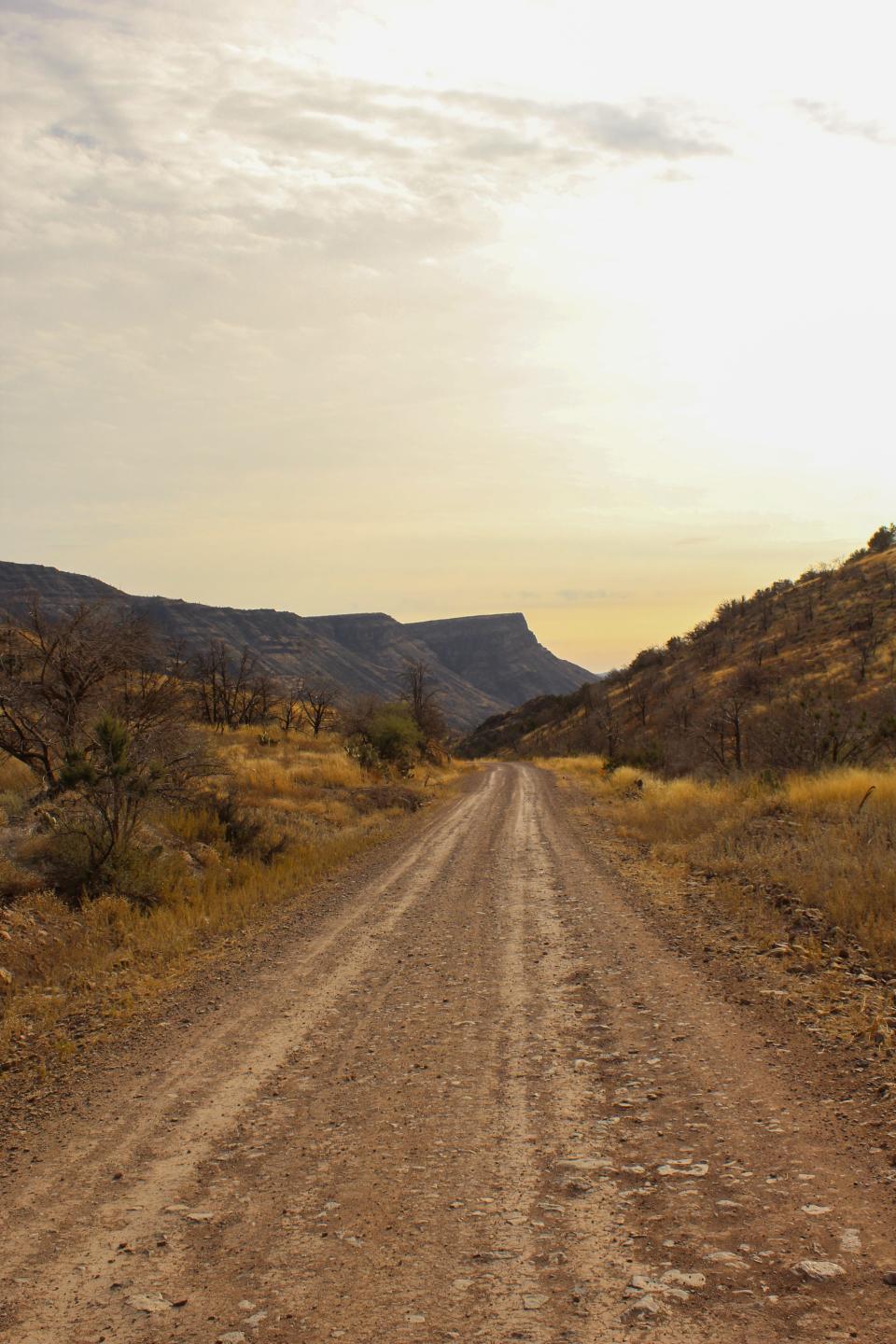
The biggest concern for officials following the fire and subsequent flooding was repairing major washouts along Fossil Creek Road that would have been a hazard to the public.
Since it is the only way in and out of this area, years of wear and tear had already left the road patchy and in desperate need of overhaul. After the fire, parts of the road became impassable, as flooding washed away huge chunks.
After a major fire, the risk for flooding greatly increases as soil becomes more susceptible to erosion and also becomes hydrophobic, a process that causes the soil to repel rainfall instead of absorbing it. The U.S. Geological Survey calls flooding one of the most dangerous hazards following wildfire.
Post-fire flooding typically occurs for several years after an initial blaze.
Prior to the Backbone Fire, the service had already received funding to perform repairs along a stretch of Fossil Creek Road. The closure created an opportunity for maintenance crews to efficiently perform large-scale road improvements without having to work around the public.
Schlueter says the first segment of Fossil Creek Road is, “In pretty darn good condition,” and that the second segment is expected to see repairs starting early next year.
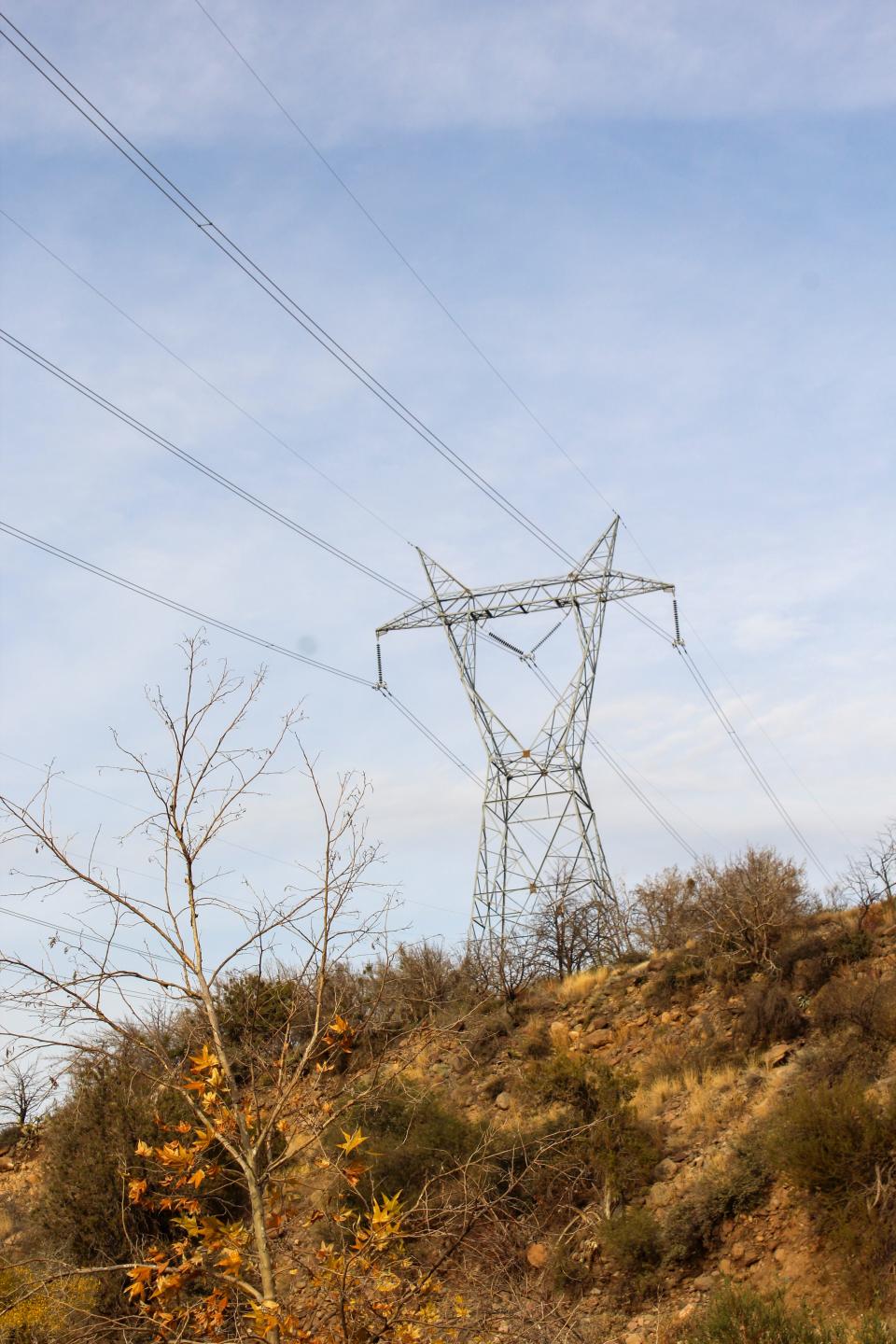
Repairing Fossil Creek Road was also essential for APS crews to access the area to repair infrastructure in an area that is a major utility corridor. APS, the Phoenix-based electric utility, had to replace fire-damaged wooden utility beams that support power lines running through the land.
A fiber-optic cable running under the entire length of Fossil Creek Road, providing phone and internet service for Payson and Strawberry, was not damaged during the fire. Utility Crews filled in broken parts of roadway with dirt as they made their way through the area to continue repairs on utility infrastructure.
With more sediment flowing in, Fossil Creek is changing
With soil turning hydrophobic and pushing monsoon rains and sediment down mountainsides, riparian vegetation would typically act as a natural barrier for absorption.
But the Backbone Fire decimated most of the area’s riparian vegetation and, with less of it, the risk of flooding grew.
“One thing to be clear, flooding is always a possibility,” Schlueter said. “It’s always risk, fire or not.”
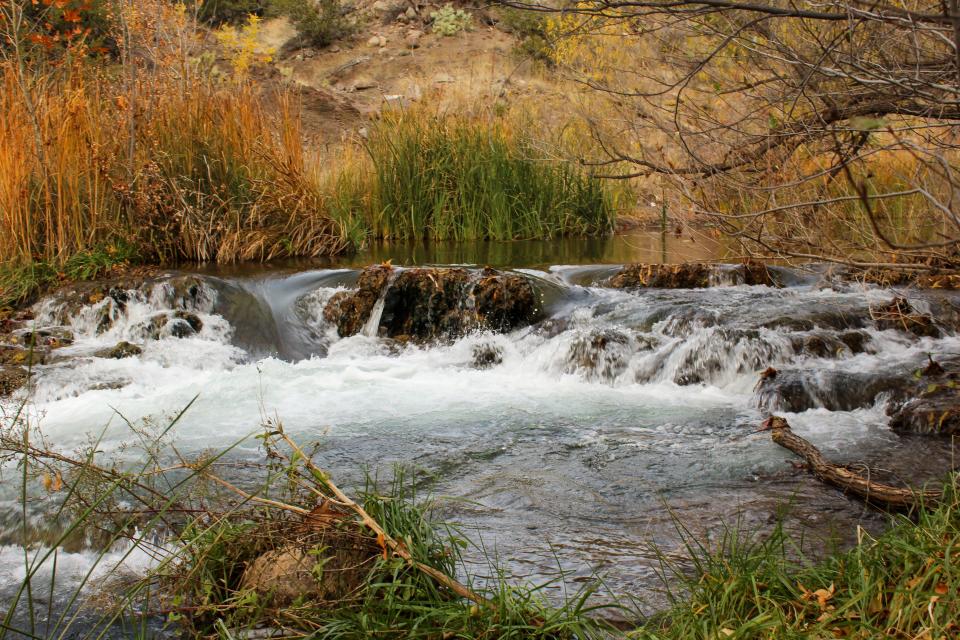
After assessing the area following the 2022 monsoon season, the Forest Service found a rebound in riparian vegetation and native grasses. And while the risk of flooding is lower, with less precipitation expected in the winter months, officials say the area could close again during the 2023 monsoon season. Riparian vegetation is still young and has not fully grown back to what it was before the fire.
By repelling water, the burnt soil has also caused an increase in sediment runoff, which has washed into Fossil Creek and other swimming areas.
“One of the things we are worried about is recreation,” says O’Neill. “These pools are changing depth really frequently.”
At Sally May, a popular swimming area for spring breakers and campers, the floor of the stream is visible from the banks and sand bars have begun doming out of the water. Before the fire, the water there was roughly 15 feet deep, according to Schlueter.
“Sediment has changed it that much,” O’Neill says, standing on a large boulder above the flow.
At another popular swimming spot, a rope has been fashioned into a swing that dangles over the water. Before the fire, it hung over a bright blue pool that would allow thrill-seekers to comfortably swing and dive. But now sediment has given the water a murky, earth-tone appearance and, with water only about a foot deep, a leap from the rope could result in serious injury.
Kayla Long, a graduate student at Northern Arizona University who volunteers with the Forest Service says she was swimming here this past summer with her head underwater, "hanging out with the fish.” Now the water is ankle deep.
Officials advise the public to be aware of the change in water depths and to ensure that water is deep enough for diving to reduce risk of injury.
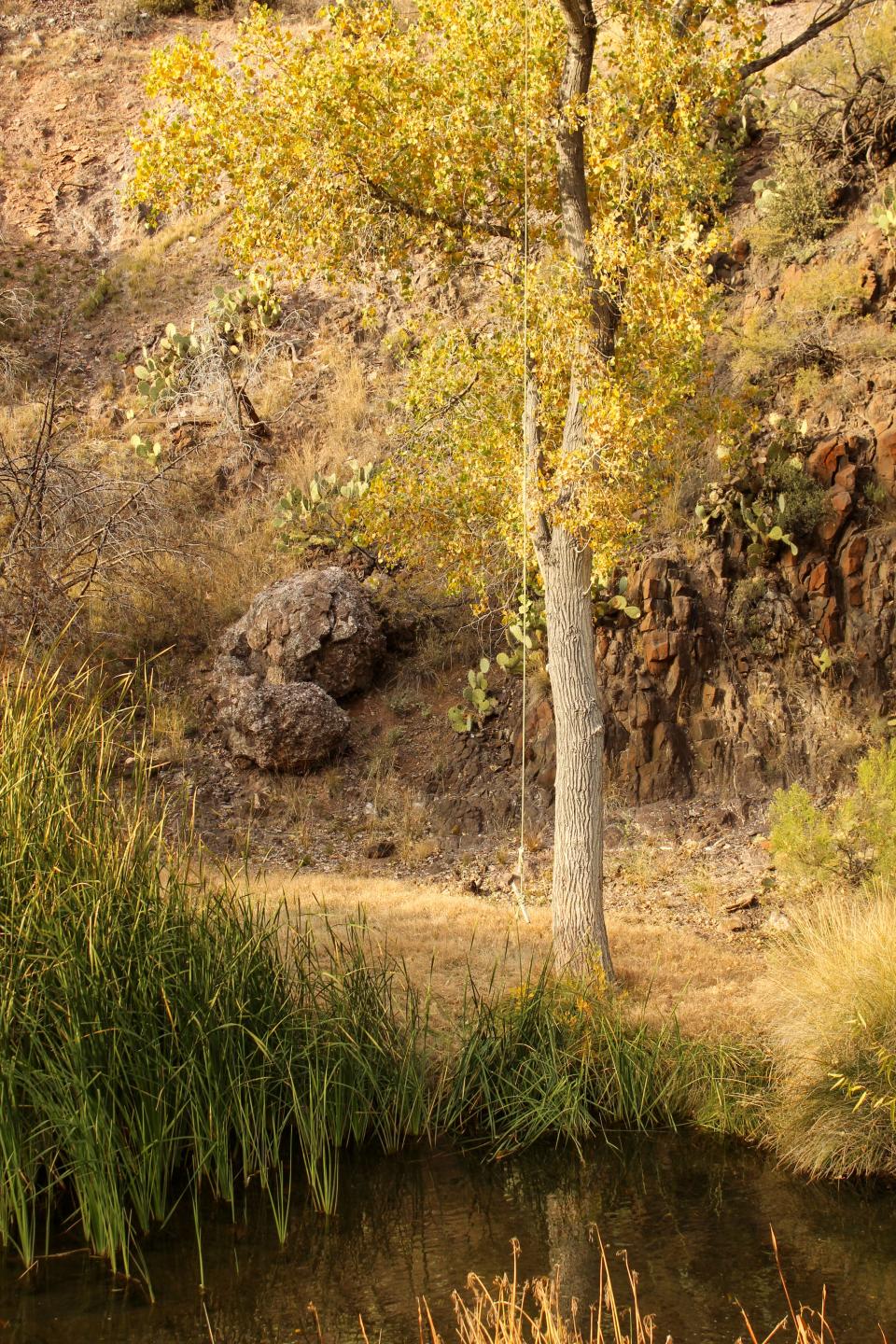
Water depth has been changing on a month-to-month basis since the Backbone Fire. During monsoon season, with increased rainfall pushing soil and sediment, water levels changed nearly every day, according to O’Neill.
Some of the most severe burns in the area were in Boulder Canyon, where high, steep slopes created the ideal conditions for severe sediment runoff. Officials say the sediment buildup at Boulder Canyon is responsible for the deposits that have filled stretches of the creek downstream at Sally May.
“This is the place we were most worried about sediment coming into Fossil,” O’Neill said. “If you were to come here in 2020, none of this sand would have been here. It was all rock.”
O’Neill and Long hop down from rock to rock next to the bridge that crosses over Boulder Canyon. They say the bridge used to go well over their heads. Now O’Neill cannot walk under without crouching or ducking. Long, who's about 5-foot-3, jokes that she can still make it under the bridge without ducking.
Regardless of their heights, the area has changed substantially. The 2021 monsoon brought unprecedented flooding, which caused sediment to build up several feet, completely covering the rocks that are now buried under silty sand.
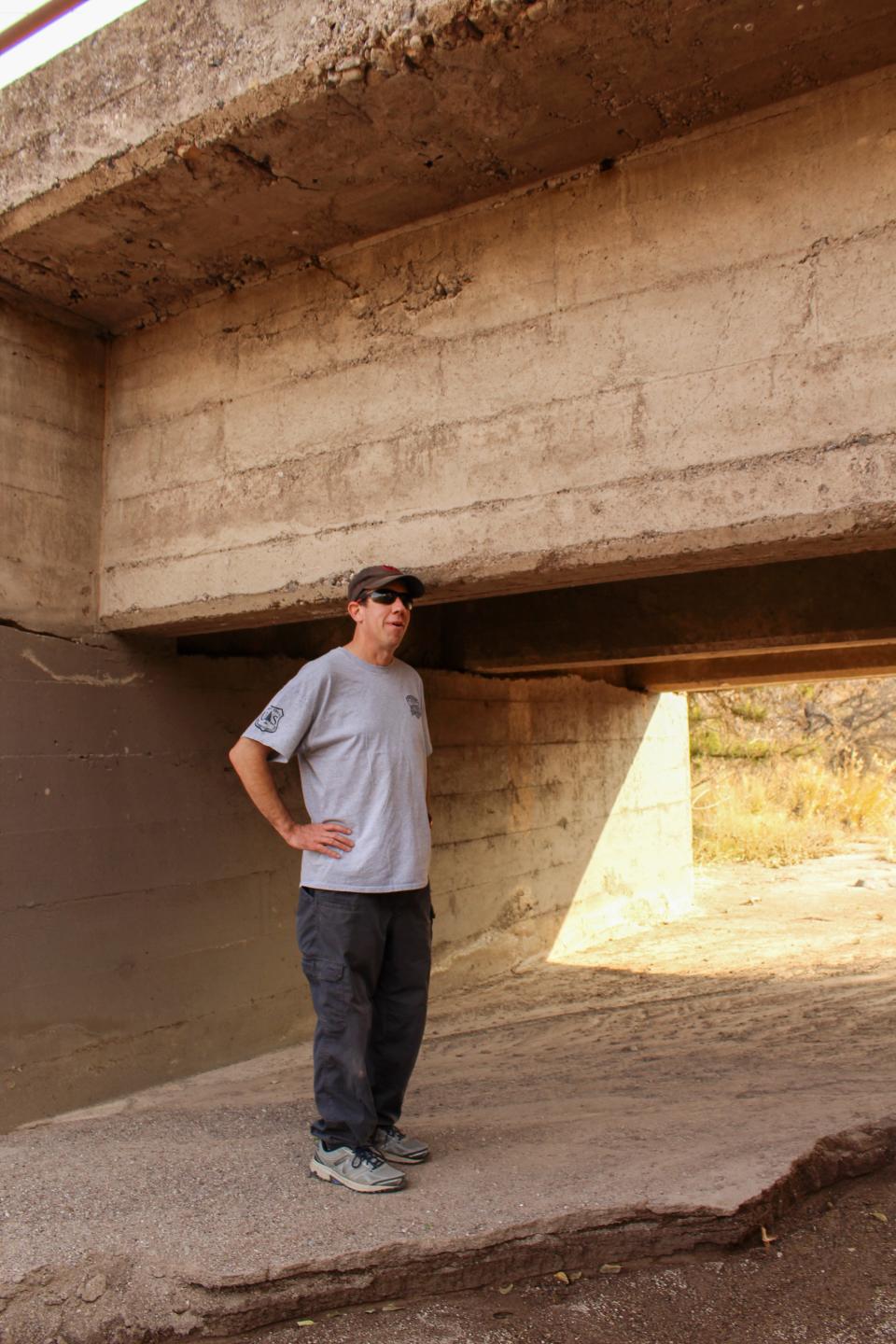
O’Neill points to a broken branch that clings to a tree near the bridge, a visual reminder of how intense post-fire flooding can be. Flood waters rose in this spot nearly four feet.
O’Neill says sediment runoff is not a new phenomenon occurring at Fossil Creek, but the scale is much more significant than in the past.
“There has always been flooding, there’s always been sediment coming into Fossil Creek,” he said. “This scale is significant, however.”
Any natural healing will take time for Fossil Creek to mirror what it was before the Backbone Fire. An increase of sediment runoff is expected for the next two to five years. O’Neill says pools here will continue grow deeper with time.
“Fossil has changed, it will continue to change,” he said. “It definitely has not reached any sort of equilibrium”
Wildlife persists and adapts to a new landscape
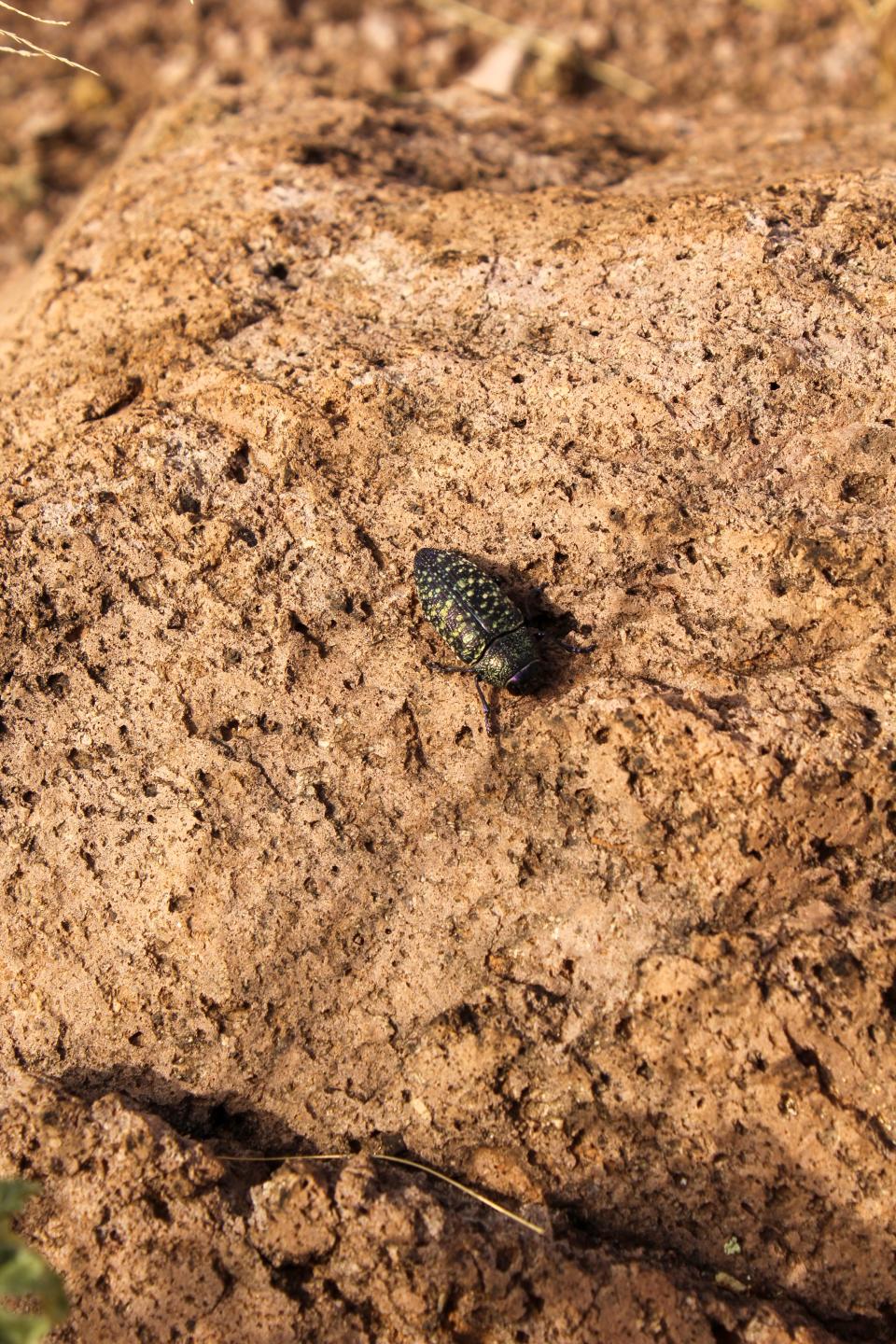
A pack of wild javelinas emerge from some brush along Fossil Creek Road, crossing one by one as the car idles. The native species have remained in the area since the fire.
Aquatic species that live in Fossil Creek were also spared during the blaze. Officials were concerned flooding would destroy fish barriers and introduce non-native species into Fossil Creek, forever altering the ecology of the creek.
O’Neill says fish barriers that were established to protect native species remain intact and effective. Fossil Creek holds eight native fish species, as well as the last robust population of lowland leopard frogs in the forest.
A barrier built by the Bureau of Reclamation "was the biggest concern for me as a fish biologist post-fire to make sure it kept non-native species out of Fossil Creek,” he said. “Its function has not been compromised at all post-fire.”
Wildfire recovery: Fossil Creek reopens: Pictures of the Arizona wild and scenic river
While fish populations have not yet been surveyed, he says preliminary snorkel surveys show that common species like the speckled dace and sensitive fish species like the Sonora and desert suckers and roundtail chub remain common. The native fish refugia remains non-native free as well.
Post-fire samples are still being processed to determine if endangered species remain in the system.
Aquatic macroinvertebrate populations typically show a decrease in abundance and diversity following wildfires due to decreased water quality and sediment runoff that gets into small cracks where species live. But the endemic fossil springsnail seems to be doing the opposite, growing more diverse in certain areas post-fire.
Initial invertebrate samples conducted by Long indicate that diversity has not been negatively affected, but appears to be stronger than pre-fire reports. Long says macroinvertebrates are a strong indicator of a healthy habitat.
This could be due to the presence of new and fresh cobble that has washed into the stream, combined with scouring floods that washed fine sediment into pools. Fire effects are expected to be long-term, lasting anywhere from five to 20 years, and the service says aquatic invertebrate monitoring will continue.
The service has also conducted surveys of black hawks over the summer and is waiting the results from that report.
With native grasses and plants returning and newly spurred cattails along streambanks, change is occurring naturally in the area surrounding Fossil Creek.
“It’s actually interesting how the land and the wildlife have recovered without people here,” Long said.
O’Neill and Long hike the mile trail toward the Fossil Creek Waterfall as the overcast clouds break and the daylight begins to wane. The mountains around the area turn purple with the sunset and the burnt flora has been replaced with full trees whose leaves shade the trail and warp the perception of time.
The approach to the waterfall transcends the desert, resembling a hike through greener mountains in early fall, the floor covered with loose yellow and red leaves that kick up with the drag of a boot.
The air is cool, with temperatures hovering in the mid 50s. Cicadas hum in the branches along the trail. The scars of a massive blaze that prompted a 16-month shutdown are forgotten as the jewel of Fossil Creek appears nearly unscathed from fire.
Jake Frederico covers environment issues for The Arizona Republic and azcentral. Send tips or questions to jake.frederico@arizonarepublic.com.
Environmental coverage on azcentral.com and in The Arizona Republic is supported by a grant from the Nina Mason Pulliam Charitable Trust. Follow The Republic environmental reporting team at environment.azcentral.com and @azcenvironment on Facebook, Twitter and Instagram.
Support environmental journalism in Arizona. Subscribe to azcentral today.
This article originally appeared on Arizona Republic: Fossil Creek reopens after devastating Backbone Fire. What changed?

